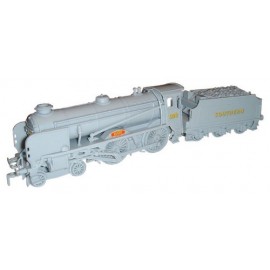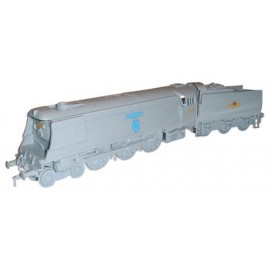Static grass puffer bottles work by manually charging model grass fibres with static electricity. When the charged...
No products
Product successfully added to your shopping cart
There are 0 items in your cart. There is 1 item in your cart.
Search Tips
What was the purpose of the counterweight that partially filled the wheels of steam locomotives?
Steam locomotives employ a system of connecting rods to transform the linear motion of the pistons into the rotational movement of the wheels. However, this connecting rod system can generate significant inertia forces when in motion, particularly at high speeds. The resulting vibrations and instability can not only lead to excessive wear and tear on the rails and wheels, but also jeopardise the balance of the locomotives. In the early years of the railway, around the 1830s, this issue was overlooked by engineers, and many locomotives derailed due to the vibrations and poor weight distribution.
To counteract these inertia forces, steam locomotive designers quickly introduced counterweights on the wheels. These counterweights are typically positioned to be opposite the connecting rod when it is at its furthest point from the wheel's centre. In other words, when the connecting rod is exerting the most force, the counterweight is in a position where it can provide the maximum counter-force.
These counterweights help to balance the forces generated by the movement of the connecting rods, thereby reducing vibrations and instability. This allows the locomotive to operate more efficiently and safely, while also reducing wear on the rails and wheels.
Click here to receive the tips weekly in your mailbox. You can unsubscribe at any time.










